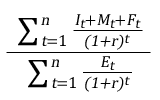Note: The previous posts were intended to provide context for the central issue addressed by Rate Crimes: the specific, long-standing, and ongoing repression of solar energy imposed through economic manipulation. The many benefits of solar energy have been introduced, a bit of astounding solar history has been shared, and a brief overview of the minimal penetration of solar energy in today’s energy portfolio was presented. Finally, this meager penetration was juxtaposed against solar resource availability. We will next introduce the analytic approach to solar energy economics that illuminates the more aggressively political (and more entertaining) analyses to follow.
Heroes
have been championing solar energy before more than half the world’s current population was born. Significant investments in solar energy have been made. In the face of diminishing and increasingly expensive historical fuels, why does solar not yet make a significant contribution to our energy portfolio, even in the sunniest climes? Why do toxic fossil and nuclear fuels remain predominant?One apparent advantage of the finite, extracted fuels is that they are dense, stored energy; whereas solar is gathered energy that often requires concentration and ancillary storage. A second apparent advantage of the finite fuels is the availability of large, accessible reserves. However, these apparent advantages of extracted fuels are counterbalanced by diminishing reserves in conjunction with ever-increasing costs of extraction, refining, transportation, waste management, environmental remediation, and decommissioning.
Without a clear advantage, and with the increasingly apparent disadvantages of historical fuels, the issue of economic valuation is becoming central to the development of energy policy. In the current economic climate it is ever more critical that clarity be brought to this issue.
The economic valuation of energy is fraught with hazards and dispute. However, the greatest hazard is the most pervasive. It can certainly be argued that the greatest hazard is poor regulation, or perhaps ignorance. However, I argue that the greatest hazard in the valuation of energy is professional deformation: the favoring of familiar lines of evidence, while ignoring that from other disciplines or perspectives.
The current energy regime makes investment decisions from the perspective of a large, long-established, complex, rigid, vested plutocracy. Their vision is not only professedly self-interested, it is myopic.
 The central doctrine of valuation for the energy regime is the levelized cost of energy (LCOE). This tool is regularly used to explain and justify choices for energy solutions, investments, and policy. Even major environmental groups subscribe to the dogma born of LCOE analysis:
The central doctrine of valuation for the energy regime is the levelized cost of energy (LCOE). This tool is regularly used to explain and justify choices for energy solutions, investments, and policy. Even major environmental groups subscribe to the dogma born of LCOE analysis:
“The cost of solar energy has fallen sharply over the last 20 years. Still, electricity from a concentrated solar power plant can cost about 10 to 14 cents per kilowatt-hour, compared with about 4 cents per kilowatt-hour from a coal or natural gas power plant. Electricity from small or medium-scale solar photovoltaic arrays (installed on homes or businesses) costs around 25 to 40 cents per kilowatt-hour, but these prices should continue to drop thanks to falling installation costs and the growing number of incentives and tax packages offered by nearly every state government” – National Resource Defense Council
However, like all tools, LCOE can be, and often is misused. The term ‘LCOE’ is often used peremptorily and to lend authority to conclusions that are based on incomplete or incorrect analysis. LCOE is a delicate instrument that can easily be twisted to produce predetermined results, or to obscure. LCOE is only a guideline. It is neither necessarily rigorous nor irrefutable. It is not an effective tool for comparing apples to oranges.
There is a more rigorous, complete, and revealing approach.






No comments:
Post a Comment